Following up on reports of a newly discovered pair of Eastern Screech-Owls, I rushed out of my office and made it up to them just at fly out. I couldn’t get my camera focused fast enough to get them in their cavities. They are using two holes in adjacent tree limbs.
Before they flew out, once gave a soft call, and they flew out one after another and quickly copulated. They then stayed in nearby trees preening, copulated a second time and then went off to hunt.
These would be my sixth and seventh Central Park Screech-Owls of the season.
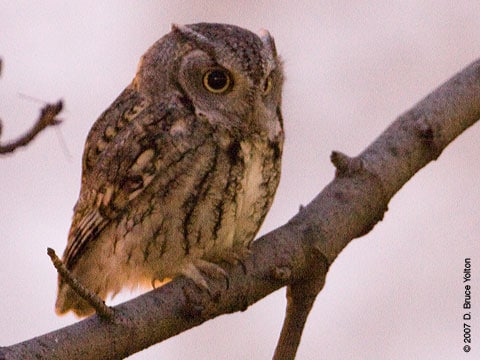
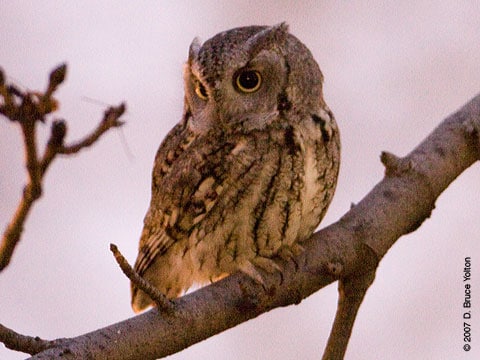
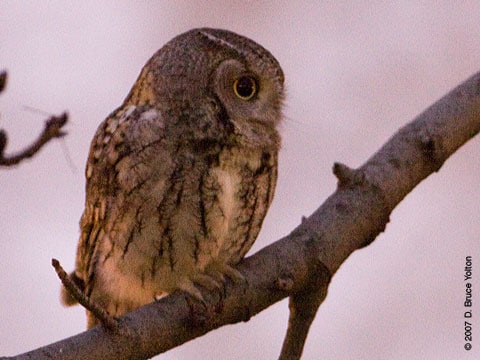
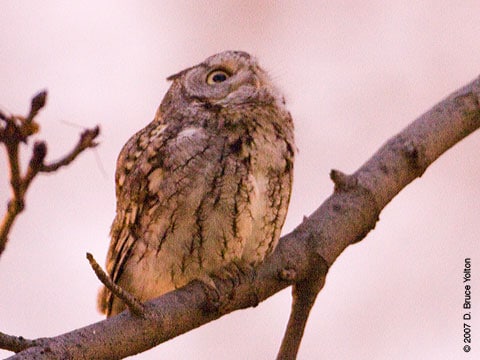
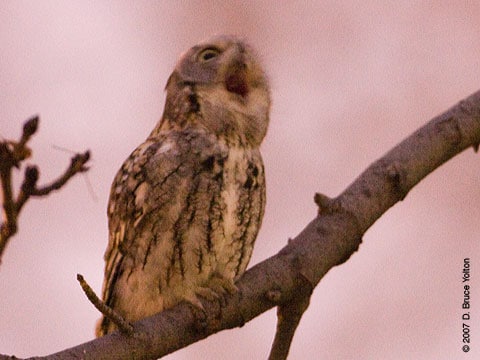
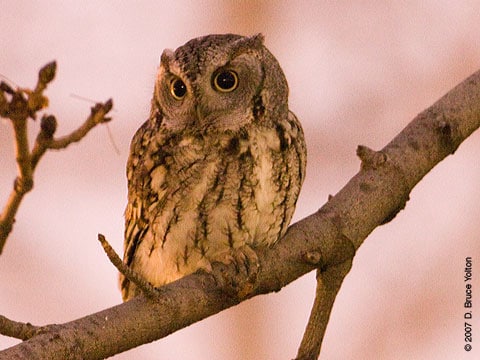
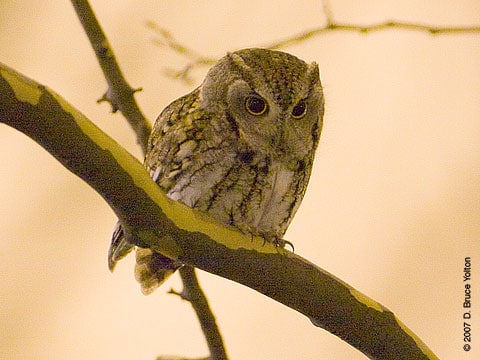
I didn’t see them actually hunt, but heard one of them land in some leaves and reappear. Then it was a quick trip back to one of their cavities.
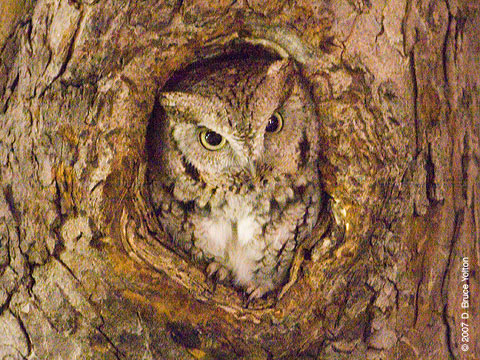
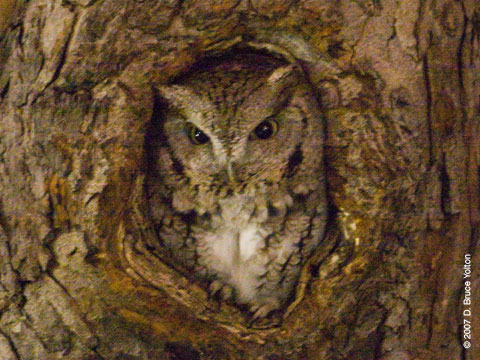
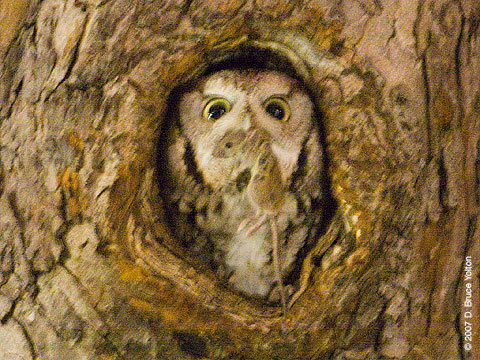
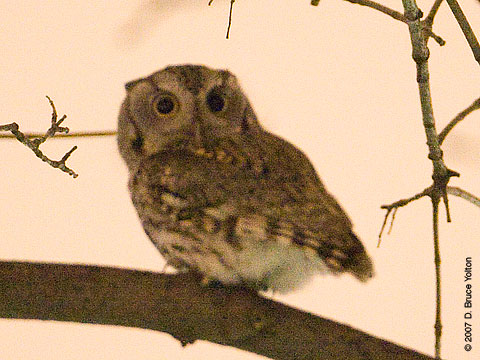
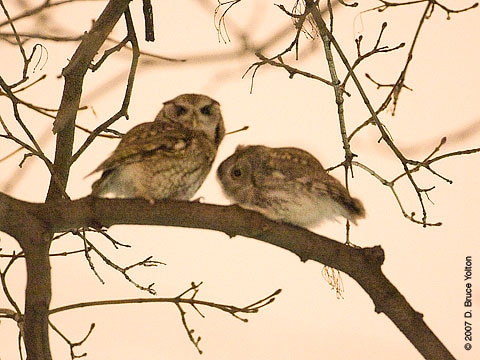
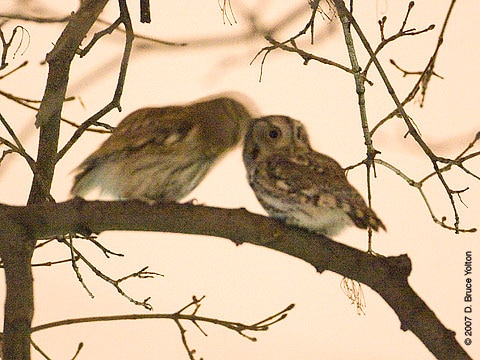
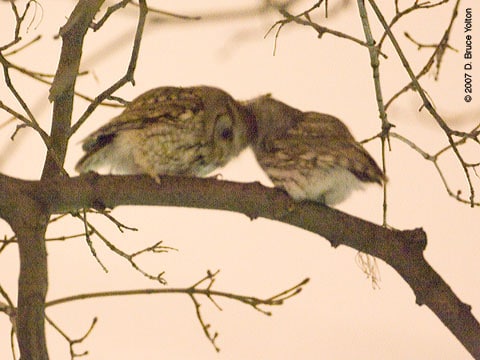
An update for New York City’s birdwatchers…
One of the park’s pairs of owls may have laid eggs this last weekend. This educated guess is based on the pair’s recent changes in behavior. If we’re correct, this is consistent with past years. Starting with the fledge date of late February in 2007 or the early March fledge of 2006 and subtracting 28 days from nestling period, and then go back another 26 days for incubation period gets you to early January. (This is about six weeks too early, but is characteristic of the Central Park Owls.)
While this is just a guess, we all might want to switch gears and assume that there are nesting owls in the park. This would mean limiting the sizes of groups, not playing recording of calls, limiting the time we spend around the cavities, being discrete about their locations, etc. The American Birding Association has a great set of guidelines online, which are worth reviewing.